367
I came home on November 23, 2016. 367 days, 13 countries, 1 year on the road. To distill my travels, numbers like these are easy to offer. Yet, to convey the totality of my experience, numbers clearly fall short. Photographs and stories are more detailed and engaging, but they too are incomplete, often just snapshots tethered to a time and place. Instead, I find the lasting value of my trip is best appreciated as a set of lessons, connected and reinforced from across my journey.
Like so many others, my travels were initially guided by a spirit of adventure. I sought out beautiful locations and once in a lifetime experiences. I trekked over mountains and descended deep into the ocean. I connected with fellow travelers and stayed with gracious locals. I immersed myself in culture and I found time to reflect by myself. I hoped the exotic world around me might teach me something. That in the right circumstance with the right people, I might discover something transcendent about who I was or how I saw the world. So long as I chose the right trail and the weather was just so, the truth of it all would magically appear in one epic and obvious shift.
In reality, the most meaningful moments of my trip were subtle, and at the same time readily available. Gathered from interactions in a remote village in Laos and on a crowded street in India, and then pieced together on a lonely stretch of trail in Nepal, it was the shared and repeated expressions of everyday life that yielded the most profound lessons of my journey. That one country, just like one sunset, is not better or worse than the next — they’re just different. And, despite cultural differences, people from all over the world are fundamentally the same, trying the best they can to take care of themselves and the ones they love.
By its nature, travel sharpens our external senses. Yet, it also implores us to turn inward. In a world where everything is foreign, where moving on is more common than staying put, the only thing that is reliably familiar, stable, and apparently constant is ourselves. In these wild and often uncomfortable environments, we learn that we can get used to just about anything. That, like the many I saw who live and thrive on very little, we are infinitely adaptable because we can assert the power of our mind. And our mind, rather than any point on a map, is where we may find real peace.
Ultimately, extended travel is less about where we go physically, but where we go intellectually and spiritually. It alone cannot permanently fill a void or ensure lasting happiness. But, it can provide a circumstance to freely explore our true selves. And for that opportunity, I am forever grateful.

Annapurna South at sunrise
Poon Hill, Nepal

Steep incline on the Annapurna Circuit
Near Tilicho Lake Base Camp, Nepal

Patrick enjoying the view on the Annapurna Circuit
Near Karma Samten Ling Monastery, Nepal

Textiles delivered
Jaipur, India

Smoking man
Rishikesh, India
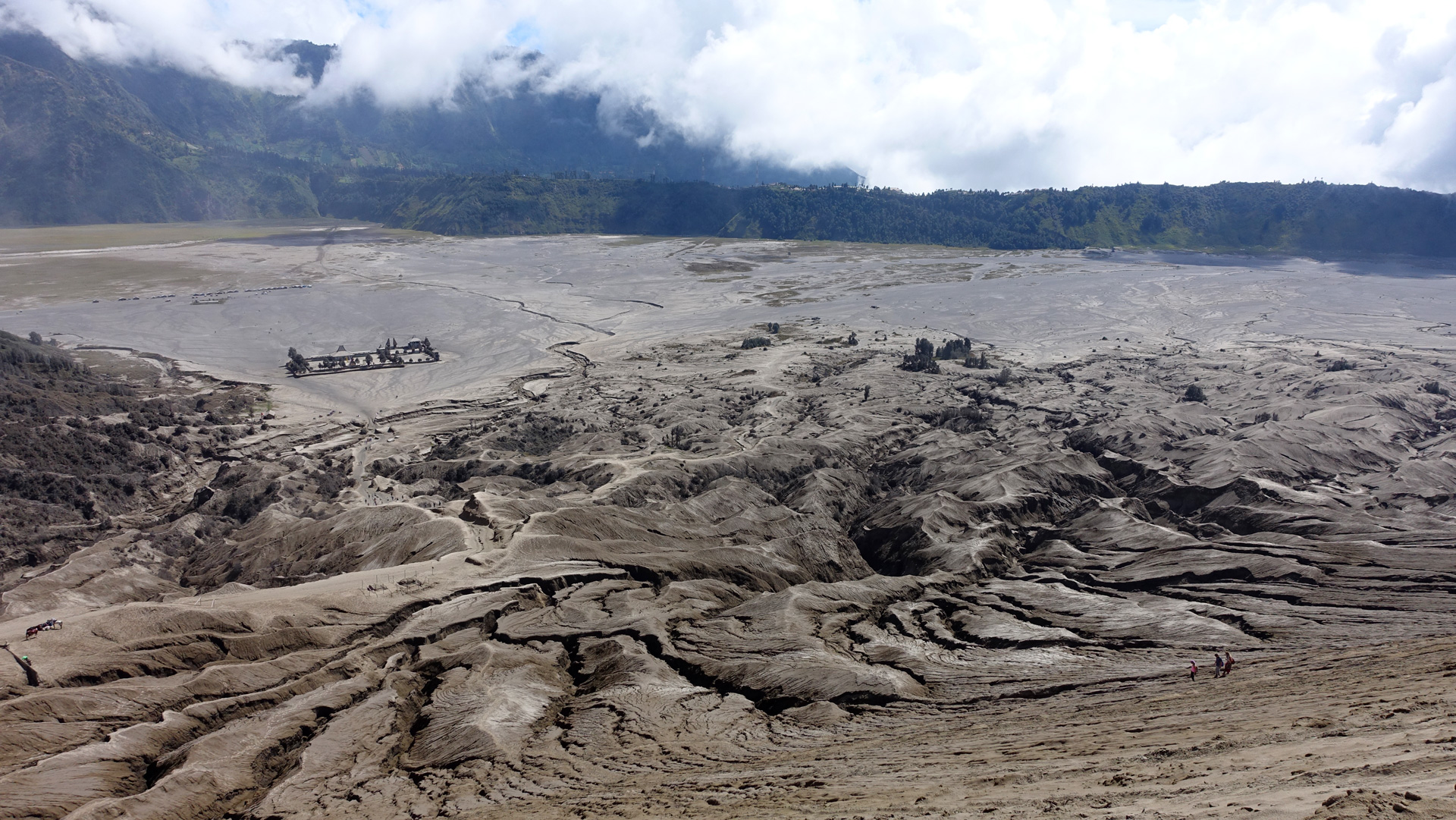
Scarred volcanic landscape
Mount Bromo, Indonesia
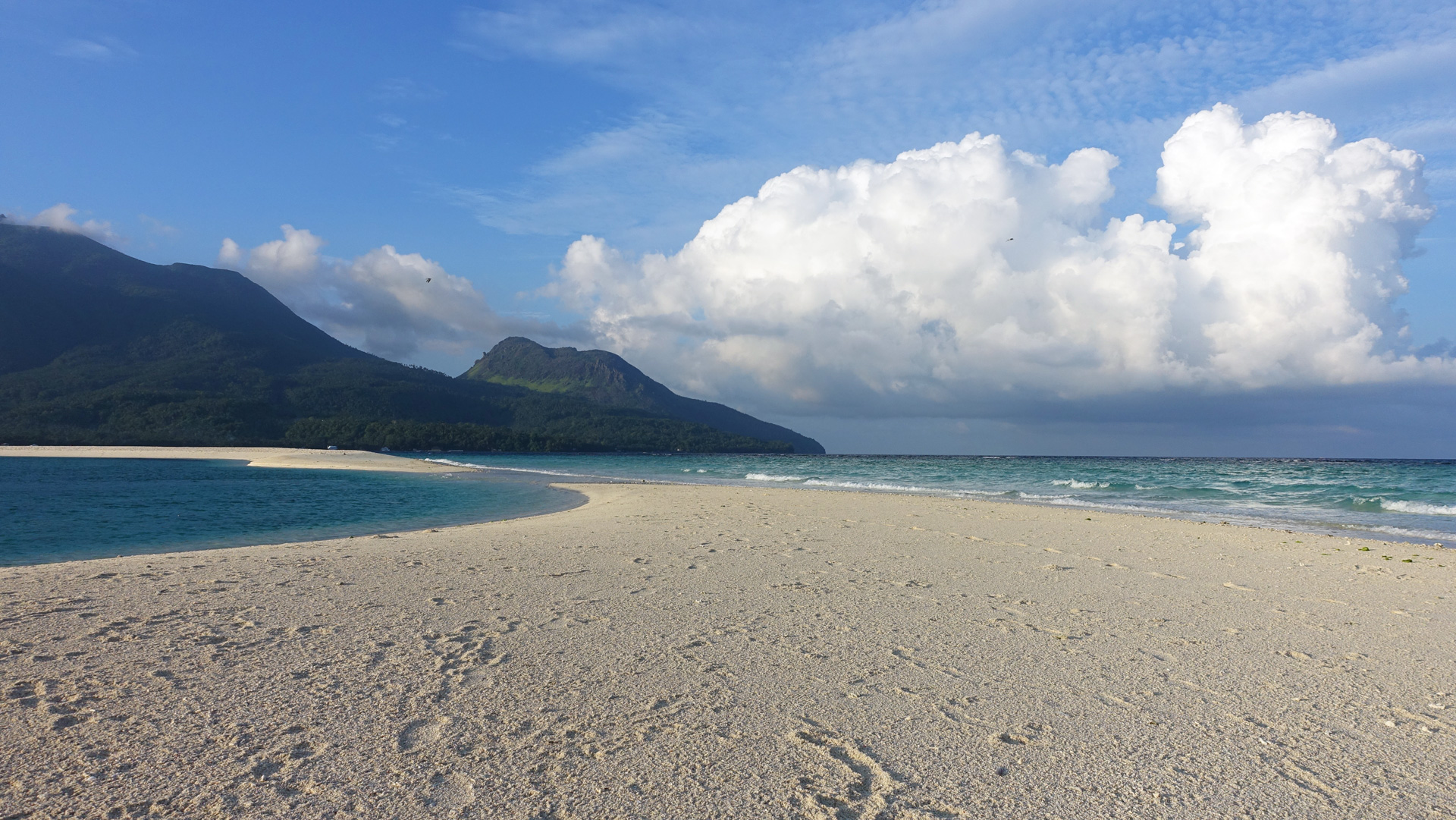
White Island
Camiguin, Philippines

Street art
George Town, Malaysia
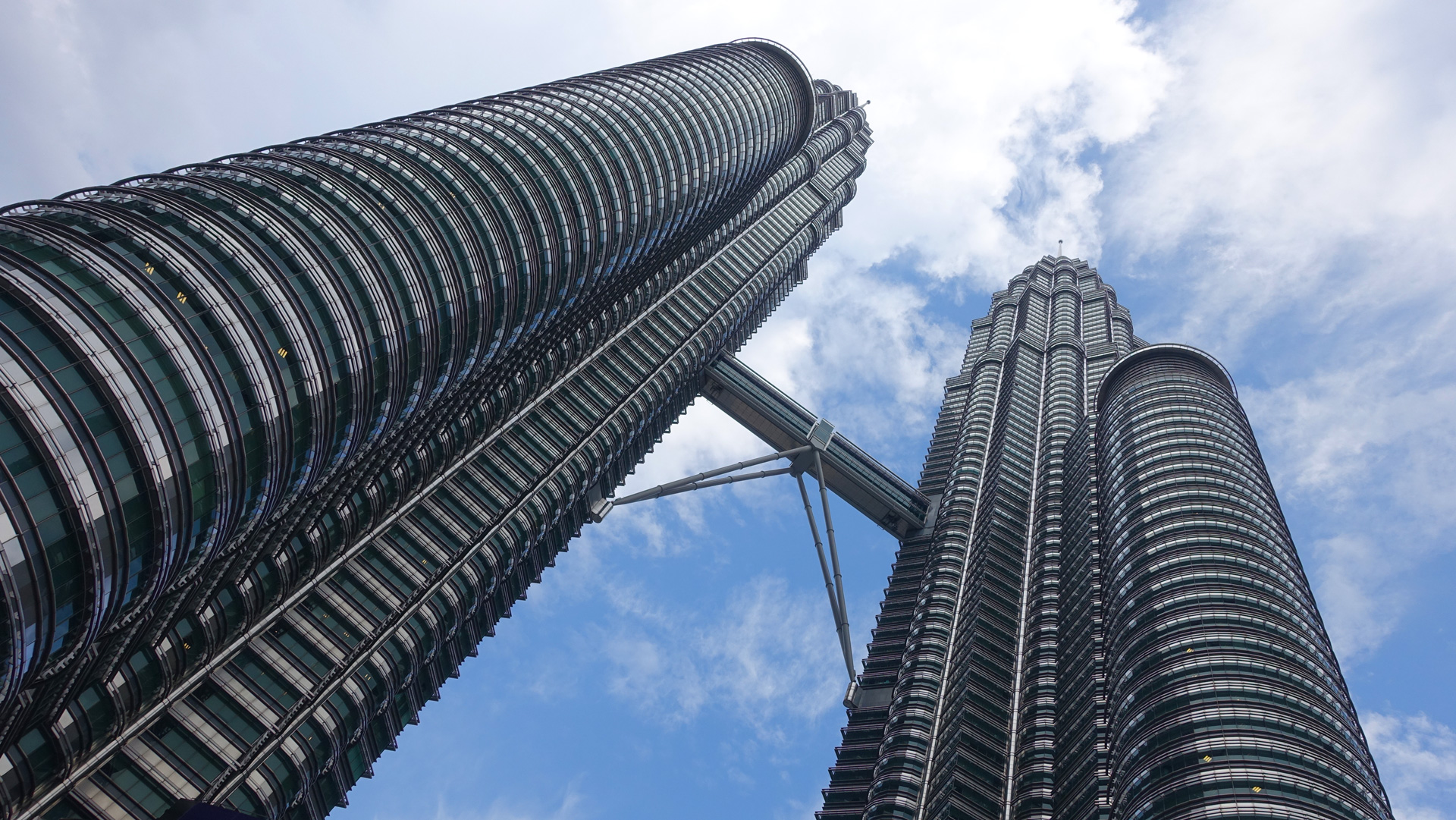
Petronas Towers
Kuala Lumpur, Malaysia
Traveling Lightly
Much has been written about how to pack for a long trip. What to bring and what not to bring; how best to manage bag space and weight. The less you carry, the less discomfort awaiting you on that inevitable day you are forced to haul your stuff longer than you wanted.
But what about traveling lightly in a different sense? What about traveling lightly as it relates to how you interpret your experiences and how you see yourself?
Ostensibly, travel is about the place — what there is to see and do. We want travel to be life-changing, so we research and we plan, developing expectations simply by deciding where to go. Yet, despite what is portrayed in the guidebooks or promised by the tour companies, there is no right experience. Comparing our own experiences to these authorities and even to fellow travelers is a recipe for dissatisfaction. The truth is, no matter how good the story, another person’s experience is not a commentary against your own. And, just because nearly everyone does a thing in a place doesn’t mean you must.
For most, travel is not a permanent way of life. In fact, nothing about it is. We snap endless photos trying to hold on, yet nothing can stop an experience from ending and a place from evolving. We tell ourselves we’ll come back, but chances are we won’t. And even if we did, it wouldn’t be the same. On the road, each moment is unique and fleeting. And so are the people. To share a conversation with a local, to open up to another traveler you just met and will never see again tomorrow, requires a certain letting go.
Early on in my travels I was frustrated by these realities. Lately though, I find myself more accepting, focusing instead on simply appreciating the opportunity to travel and the beauty of the exotic world around me. And as I consider the eventual end of my journey abroad, I suspect traveling and living are not that much different.
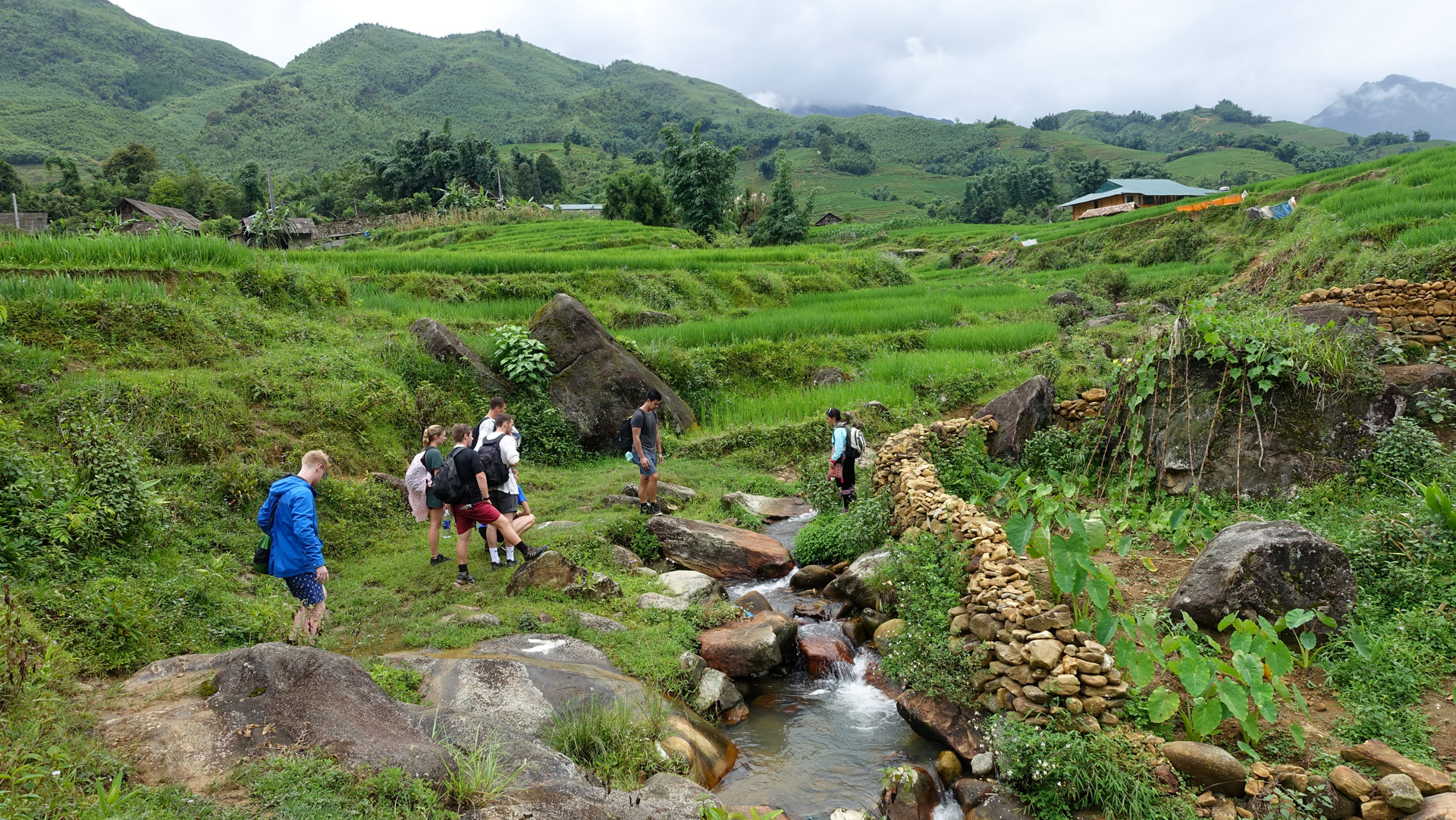
Trekking through rice terraces
Sapa, Vietnam
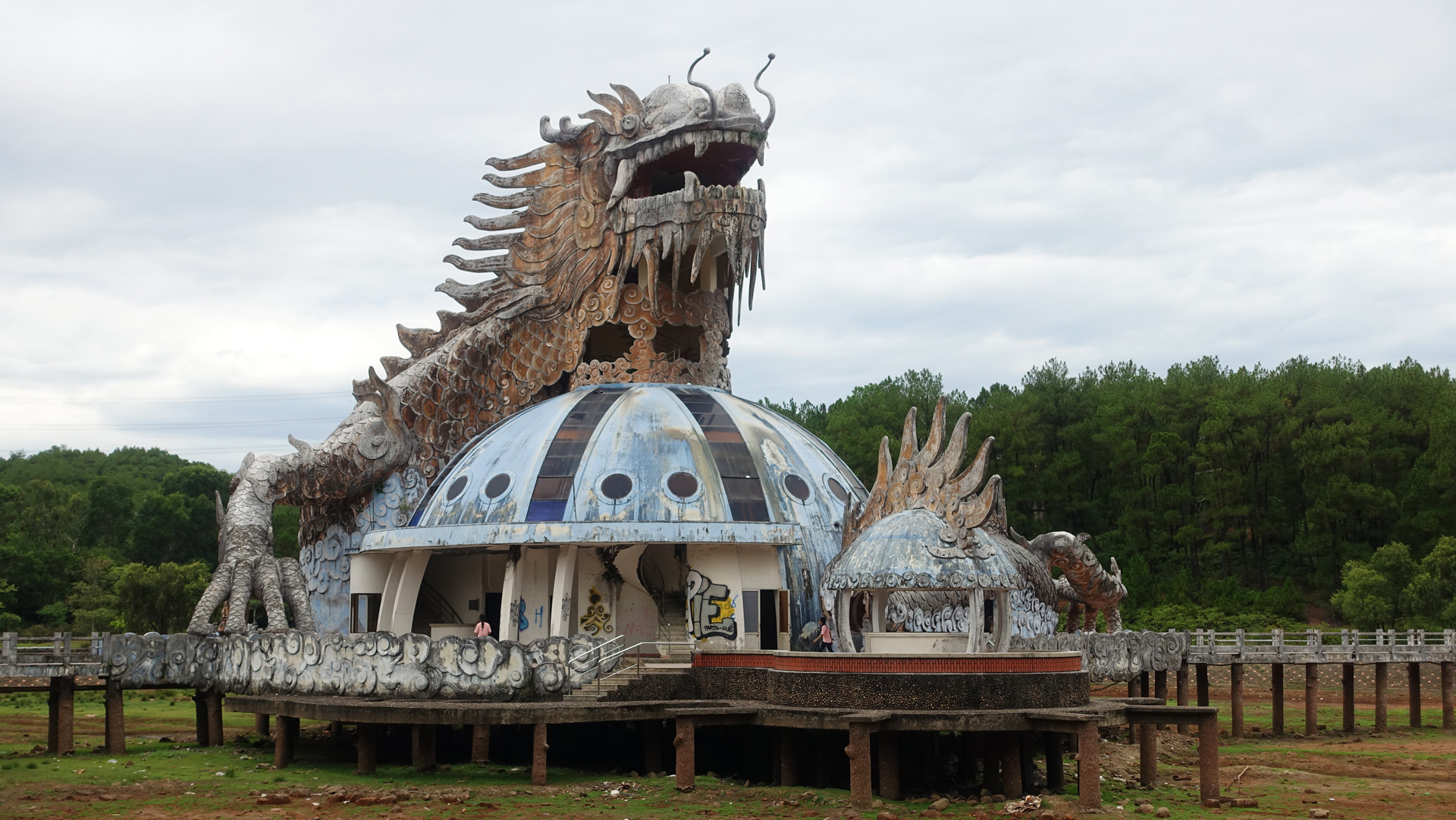
Abandoned waterpark
Hue, Vietnam

Sleeping
Ho Chi Minh City, Vietnam
Rust in a Corner
Henry David Thoreau on travel.
Our limbs, indeed, have room enough, but it is our souls that rust in a corner. Let us migrate interiorly without intermission, and pitch our tent each day nearer the western horizon.

Typical market scene in Southeast Asia
Stung Treng, Cambodia

Colorful transport
Luang Prabang, Laos
The Seams
Every so often life transitions from one distinct period to the next. A student graduates college and enters the workforce. A couple has a child and starts a family. A working professional drops everything to travel. These transitions — or seams — in life are unsettling times. Sometimes, as in the case of tragedy, this change happens to us and we must respond. Other times, we deliberately create this tumultuousness ourselves. In both cases, life at the seams is chaotic and demanding.
Leaving home to travel was an enormous decision. Even the minor decisions to enable my trip became disproportionately significant and unnecessarily difficult. As my plane took off the day I left, I couldn’t help but weep quietly, alone and questioning everything I was about to do.
While challenging, the seams offer us the opportunity to grow. As everything changes, the seams allow us to reflect on our past and look to the future. With enough introspection, we are able to take stock of what we have and feel things we’ve never consciously confronted.
Inevitably, we all get comfortable. Yet, when we deliberately create a seam in our life, we strip away all that is familiar and assumed. We are left open, exposed to ourselves, and capable of learning so much.
This is Myanmar
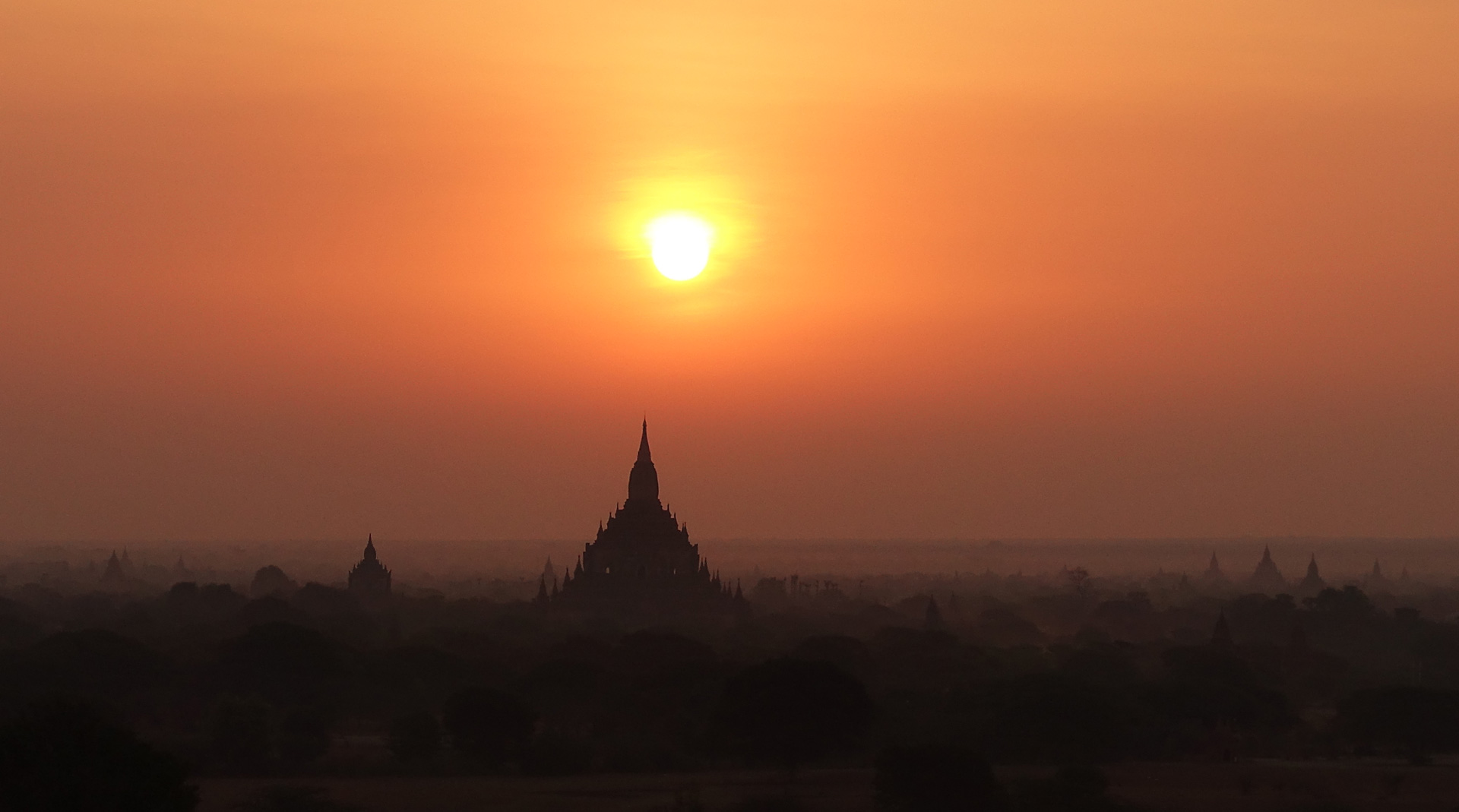
Sunrise in the land of two thousand temples
Bagan, Myanmar
Our man from the hostel chose these words to explain why the electricity wasn’t working at the time of our walk-through. “This is Myanmar.” Chances are he was channeling Leonardo DiCaprio’s character from the movie Blood Diamond with his own version of “TIA” or “This is Africa.” This was indeed Myanmar, a country lusted over by travelers for being “untouched” and farther from the hordes of tourists that dominate other parts of Southeast Asia. For decades, the military strictly controlled Myanmar and closed its people off from the outside world. In recent years, however, as more power has moved to a civilian government, the number of visitors to Myanmar has steadily climbed.
What does it look like when a country opens up after years of isolationism? What changes quickly and what changes slowly? What does a country borrow from the developed world and what does it hold on to? As a backpacker on a two week visit, my exploration of these questions was admittedly limited. What I did observe, however, was a jumbled mix of old and new and a country clearly in transition.

Wandering the streets of Myanmar’s biggest city
Yangon, Myanmar
To my eyes, the adoption of technology is the easiest to spot. The streets of Yangon, for example, are packed with vehicles of varying conditions manufactured across several decades. In fact, while Burmese drive on the right side of the road, I noticed the placement of the steering wheel was inconsistent, located on the right mostly but not exclusively. The roads themselves were also of varying condition. Major cities are connected with well-constructed highways but the pavement deteriorates quickly as you move away from the main transportation links. And in nearly every location I visited, traffic signals, signs, and even painted road markings were nonexistent.
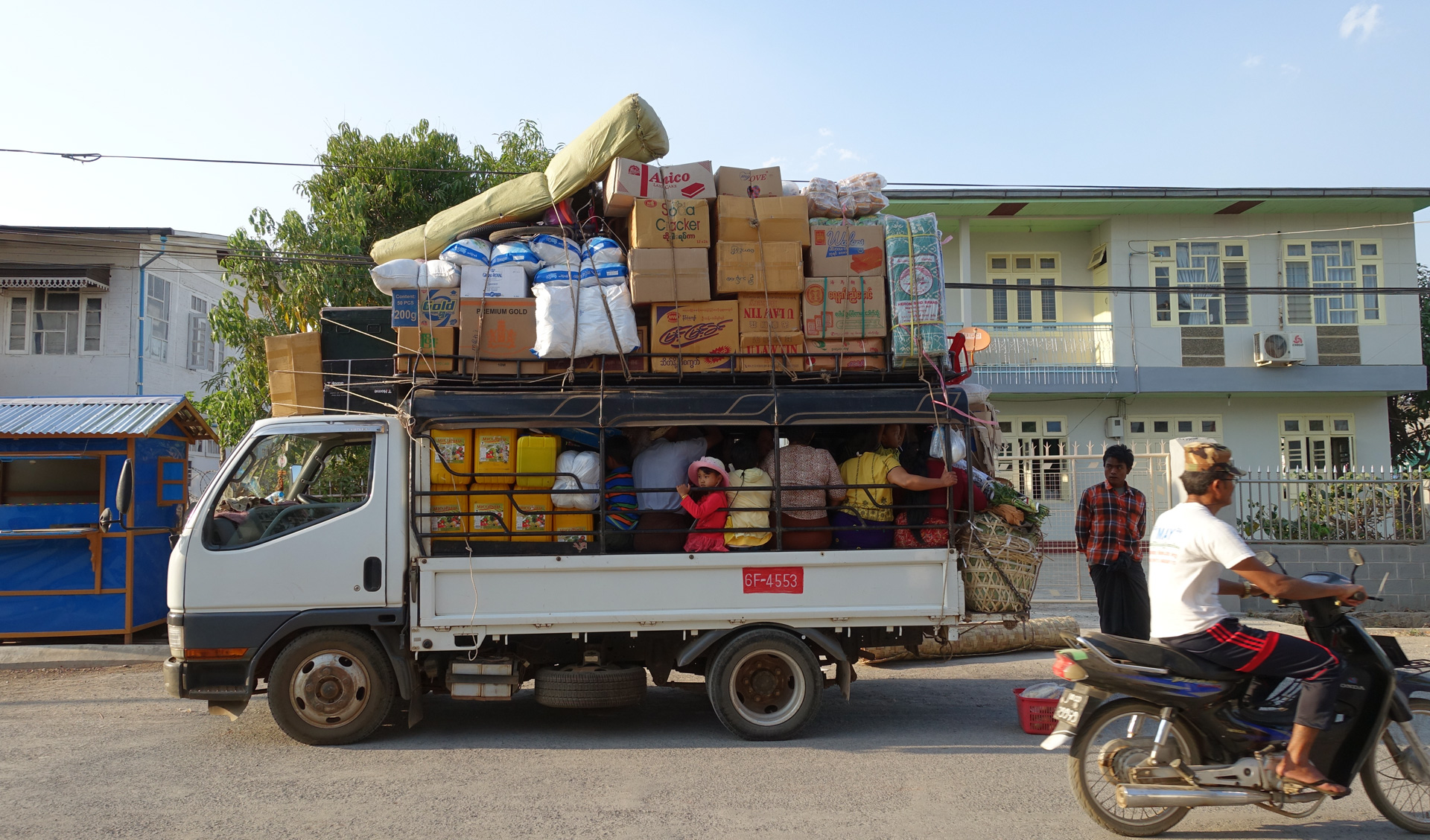
Overflowing truck
Nyaung Shwe, Myanmar
All over Myanmar, men wear longyis, sarong-like attire tied around the waist and stretching to the ankles. They can also be spotted using smart phones and sipping Coca-Cola. Instead of cigarettes, Burmese prefer betel nut, a rather disgusting red chew that stains teeth and sidewalks. And, no matter where you go, you’ll find trash along with blatant and unfettered littering. Environmentalism is clearly a modern western ideal.
Even in more traditional environments, the contrasts were still visible. In Bagan, my group of three was invited to a village ceremony initiating young boys into the Buddhist monastery. The evening celebration was anchored by a performance of Burmese music and dance, and was made possible by modern audio video equipment. In other locations, new temples continue to be built while blinking LEDs decorate many ancient Buddhist statues.
It was these contrasting observations that colored my experience in Myanmar, and, in the end, I was left with more questions than answers. While I only visited for a short time, I’m not sure a few months or even a few years in the country would offer me much more clarity.

The heroic concrete of Bangkok’s BTS rail line
Bangkok, Thailand
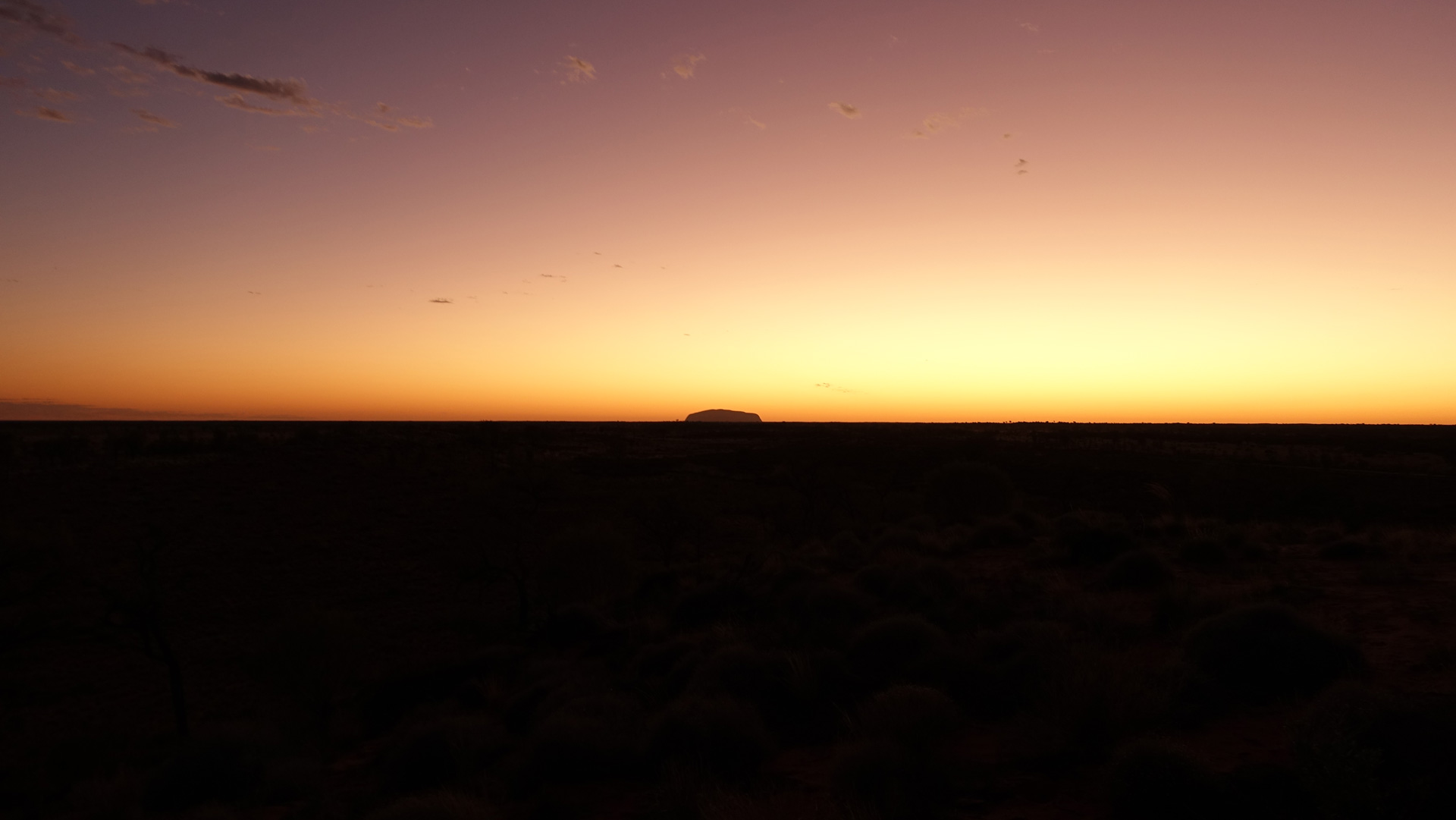
Uluru at sunrise
Uluru–Kata Tjuta National Park, Australia
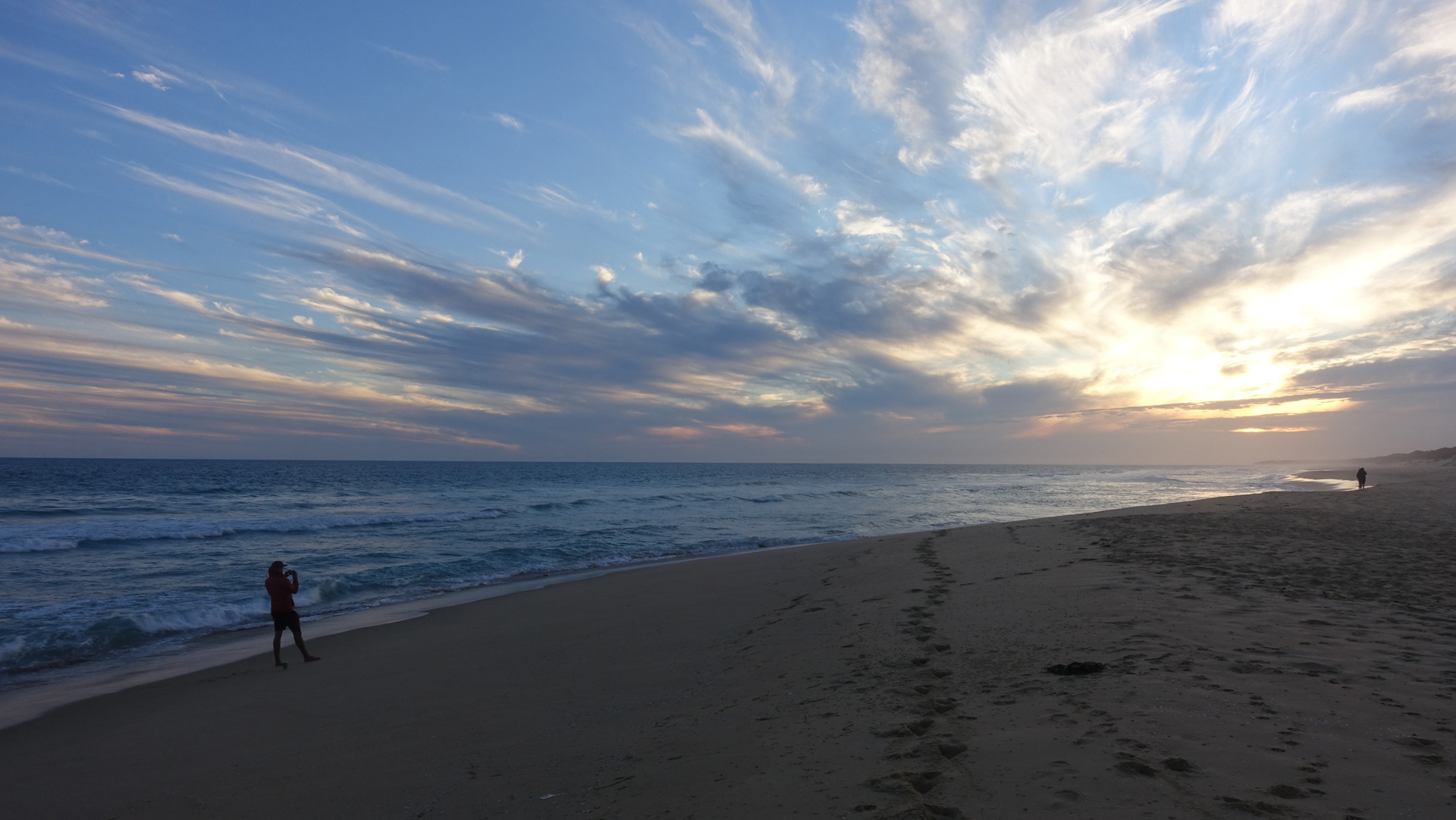
Sunset near our campsite
Pettmans Beach, Australia
How to Milk a Cow

Ruby, a Jersey dairy calf, on the left with two friends
Woodside Farm, New Zealand
For 16 days I lived and worked at Woodside Farm, a small family farm outside of Dunedin, New Zealand. Woodside is home to part-time farmers Marion and Lee who raise a modest array of cows, sheep, hens, rabbits, and bees as well as grow various fruits and vegetables. In exchange for room and board, I assisted in all sorts of farm activities. My primary responsibility was milking the dairy cow Stripey.

My accommodation
Woodside Farm, New Zealand
I wanted to WWOOF in New Zealand to learn about farming and to see what the farming lifestyle could teach me. In the weeks prior, living out of a car and moving everyday proved to be quite exhausting. WWOOFing would help me recharge before returning to the road.
When I first started, everything about the farm was unfamiliar. In fact, I was unprepared for how overwhelming being completely new and ignorant could feel. Early on, Marion and Lee went about their work and I followed along, responding to direction as necessary. This was particularly effective for one-off jobs like moving cattle or placing fencing.
Milking, by comparison, was quite different. Twice a day, every day, Stripey was milked. Each time, the procedure was long and complicated. The equipment needed to be sanitized, the cow cleaned, and the entire process executed in a specific order. On most occasions, the raw milk was bottled, adding another set of tasks to the job. The sheer number of steps made all of it impossible to master much less remember in a short amount of time.
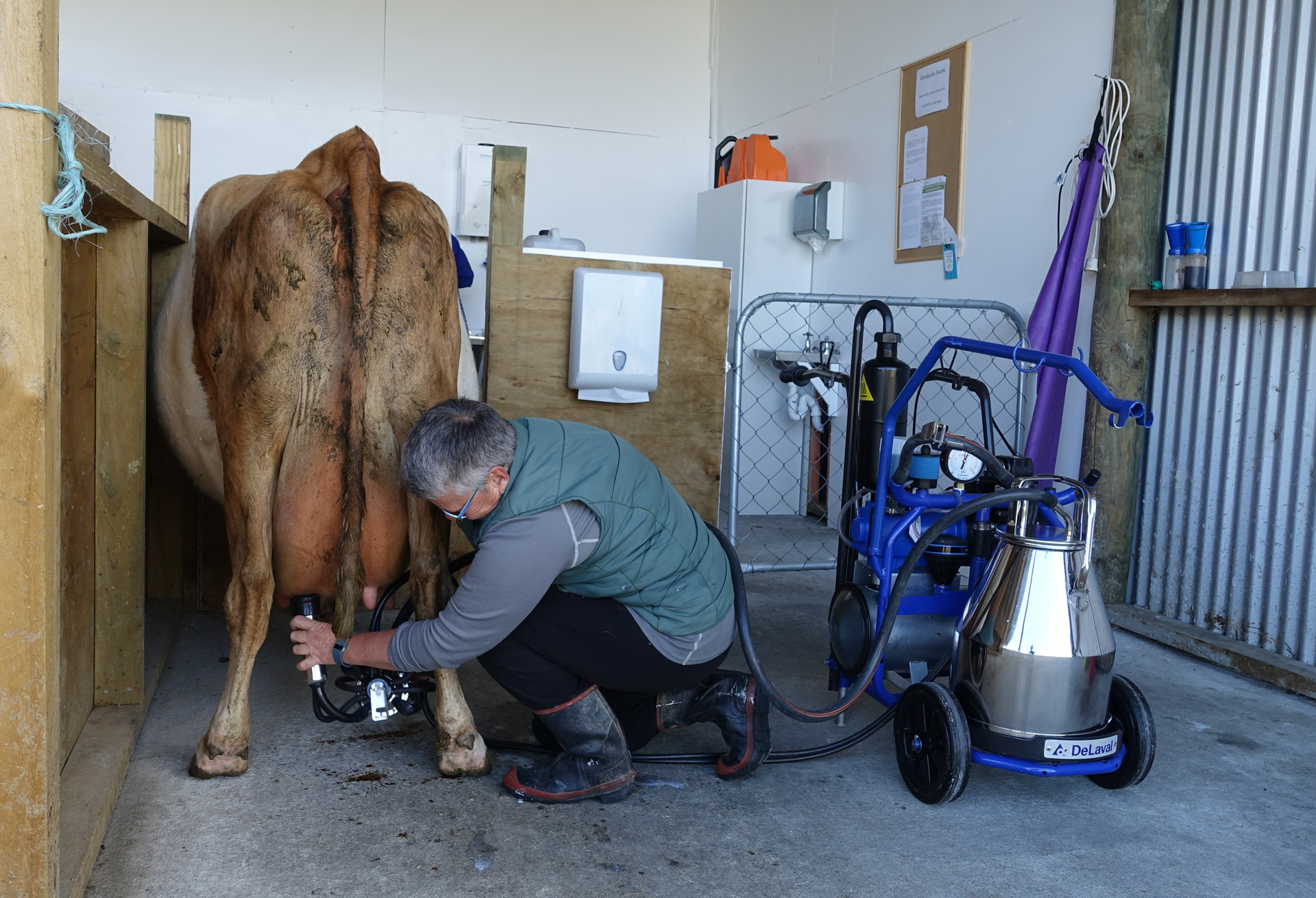
Marion positioning the milking machine
Woodside Farm, New Zealand
With each repetition, however, I did start to learn, completing certain sequences without explicit direction. A few days into it, I was optimistic I could learn the entire procedure without assistance. Then I started making mistakes — skipping steps and forgetting measurements. Eventually, I was able to move past these errors, but the lesson was obvious. Learning isn’t always a simple, straightforward accumulation of skills and knowledge. We devote the time to learn, but must let go of any expectations related to speed and progress.
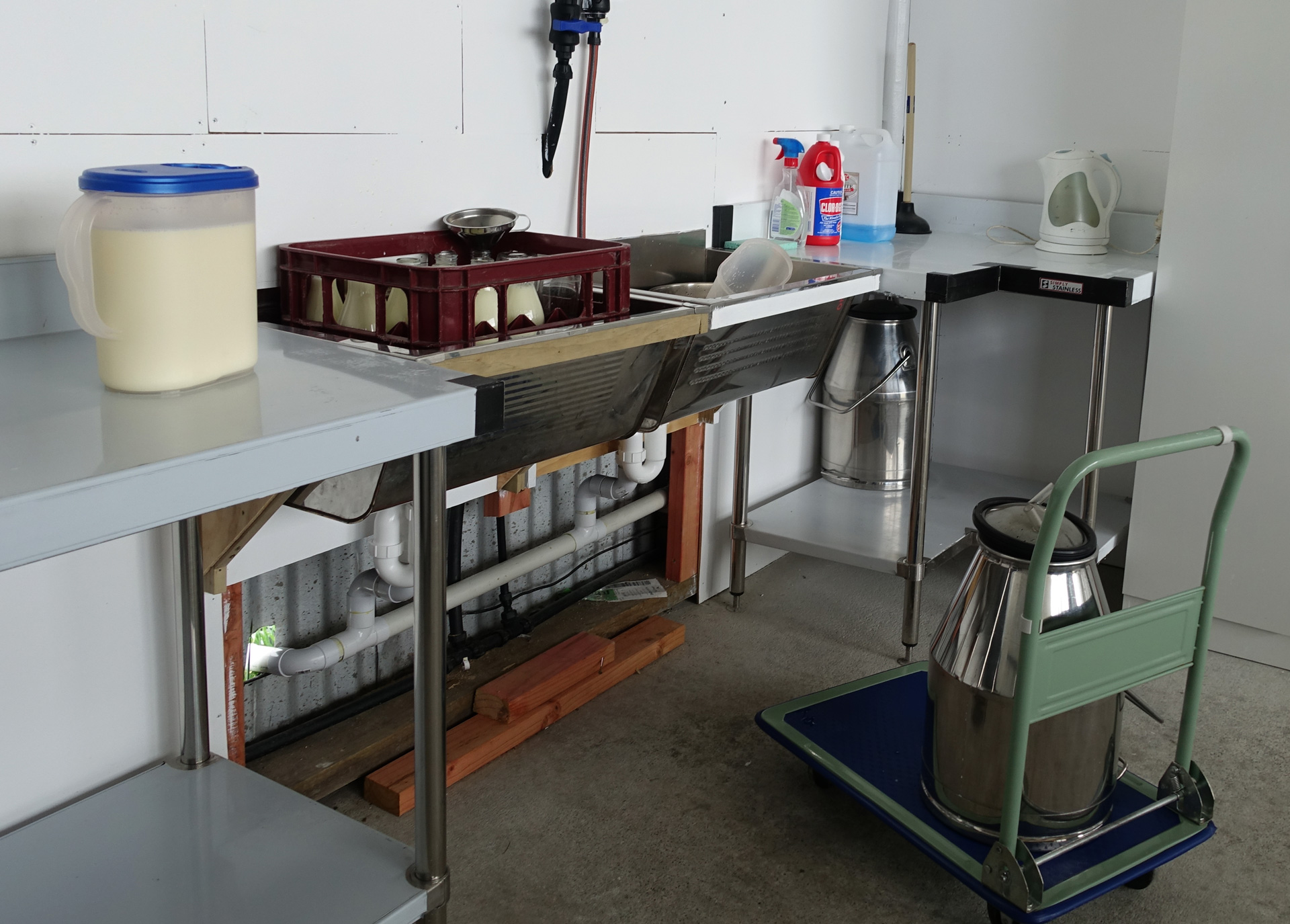
Bottling milk
Woodside Farm, New Zealand
As my time at Woodside continued, I developed a new appreciation for the work of farming itself. While farm labor can sometimes be strenuous or tedious, the connection between the effort expended and the output achieved is basic and clear. There is a special satisfaction to toil in the dirt and to produce the very food you eat.
There is also routine. To some degree, I started traveling to step away from routine. Yet, cow milking by definition occurred routinely, and routine in it of itself is not evil. Routine or more broadly regular work provides the scaffolding to craft a lifestyle and achieve ambitious goals.
It was also clear that even for a small farm like Woodside the work is never done. There are always jobs to be done and projects to start and finish. Fulfillment must be found in the day to day rather than some final achievement.
That said, I am proud of my contribution and grateful for my farming experience.
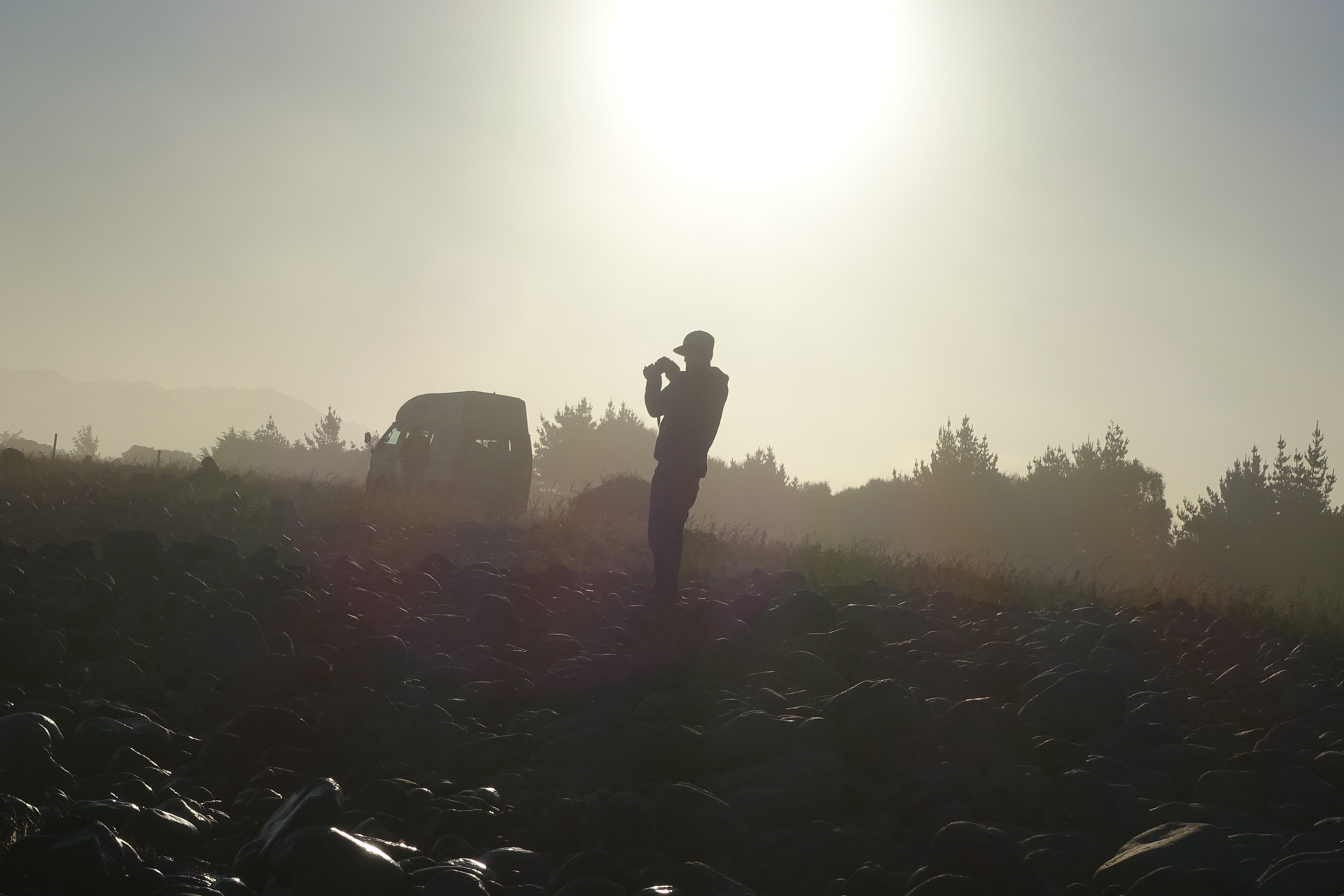
Chris capturing the incredible light at our campsite
Meatworks Beach, New Zealand
Flirting with Life
Lisa St. Aubin de Terán on travel.
Traveling is like flirting with life. It’s like saying, ‘I would stay and love you, but I have to go; this is my station.’
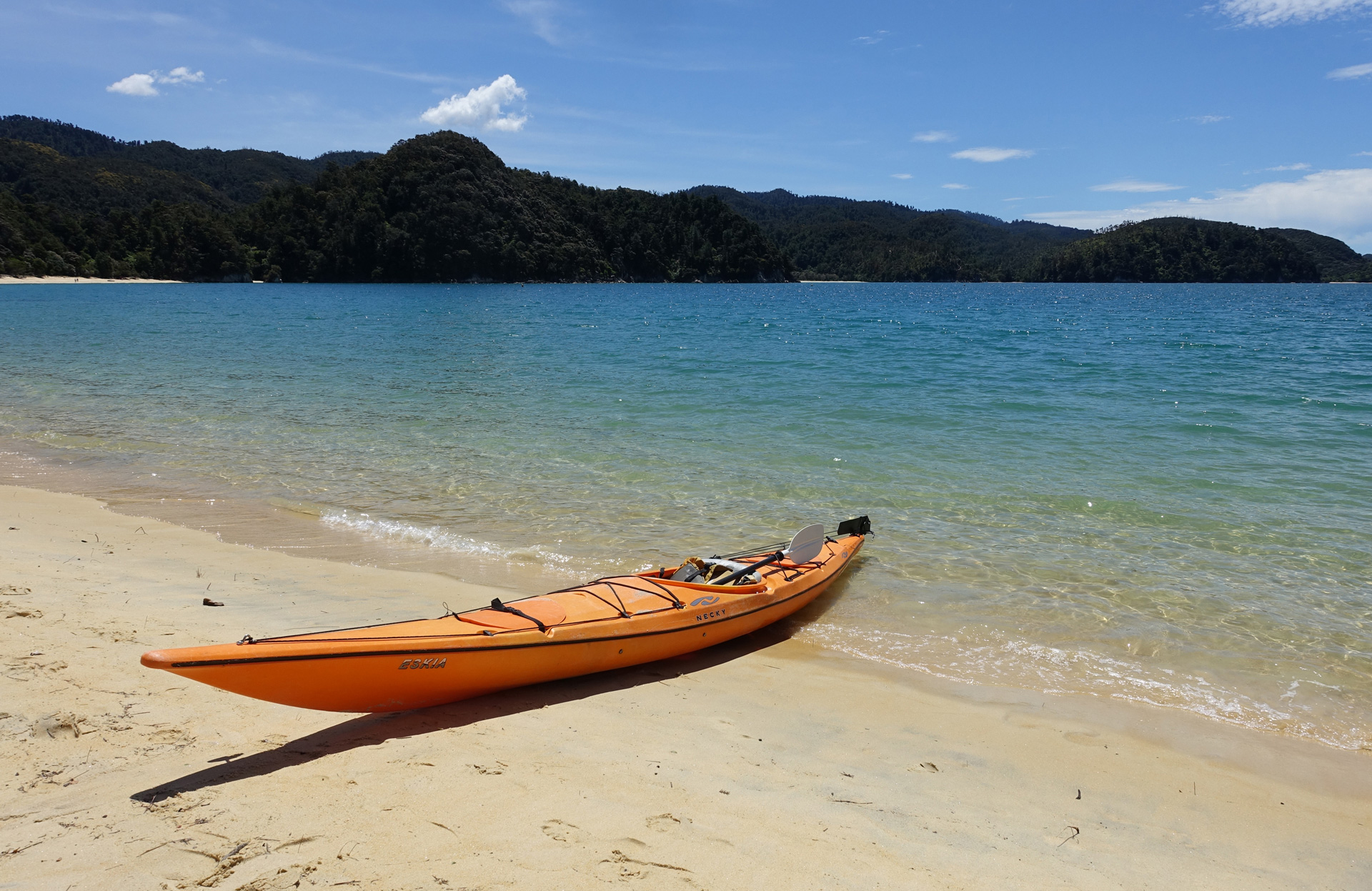
Kayak along the Abel Tasman Great Walk
Abel Tasman Coast Track, New Zealand
On the Road in New Zealand
Long-term travel is an active endeavor. It takes energy to go out and genuinely experience a place. At the same time, it’s not all guaranteed to be easy or particularly remarkable. Such was my time on the road in New Zealand.
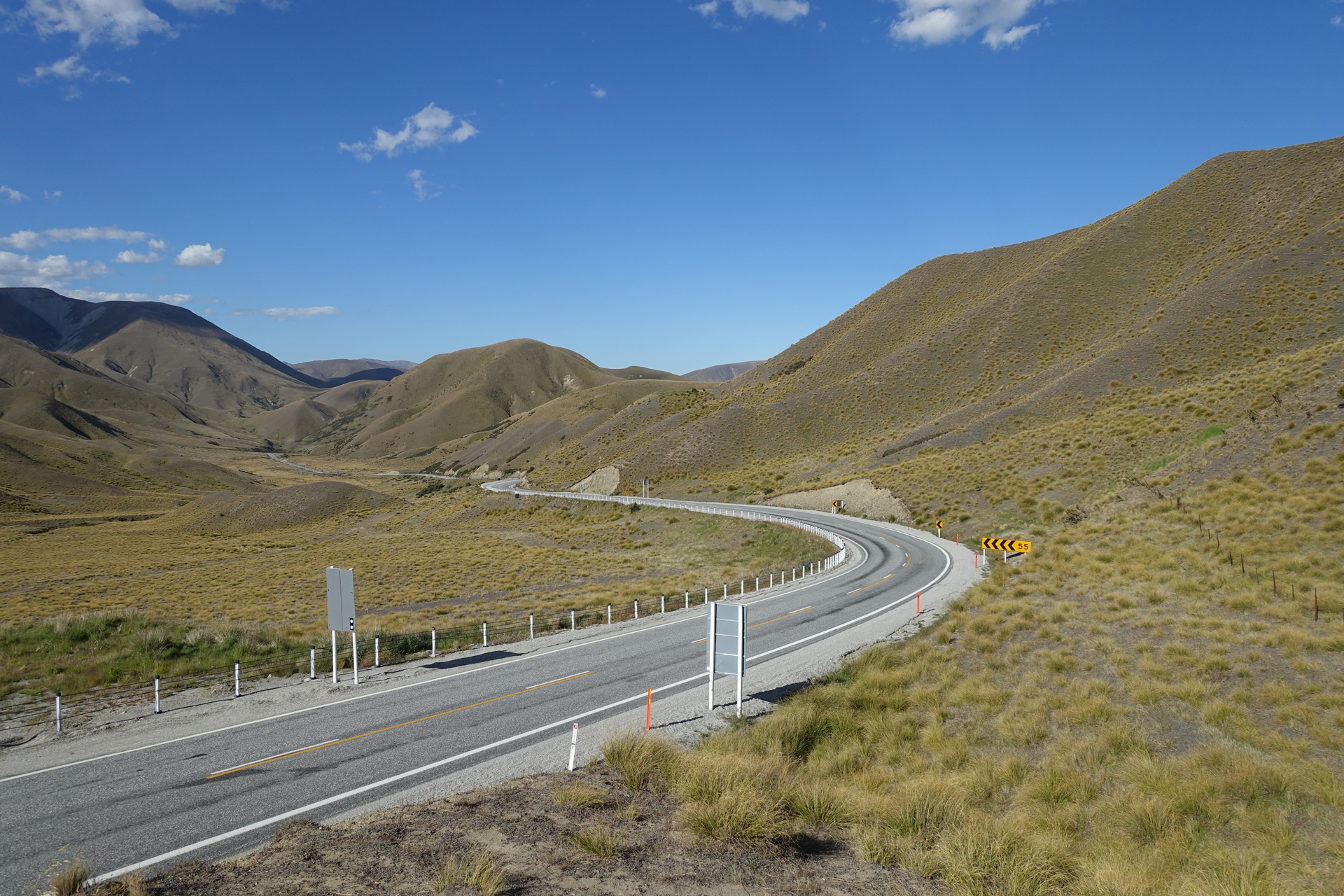
On the drive to Mount Cook
Lindis Pass, New Zealand
For about 4 weeks, Garrit, Chris, and I traveled by car across much of New Zealand. To keep costs down, we rented a late model Nissan Wingroad wagon and chose to stay at government and freedom (free) campsites. On a few rare occasions, we found secluded spots off the main road. Garrit and I shared an air mattress in the back of the wagon and Chris slept in a single person tent. We acquired cheap camping gear including cooking supplies, foldable chairs, and a portable music player from a discount retailer. Food was purchased at grocery stores every few days and regularly included pasta, rice, and peanut butter. In addition to the day’s main activity — generally, a hike or a tour — much of our time was spent preparing meals, setting up and breaking down camp, and driving.
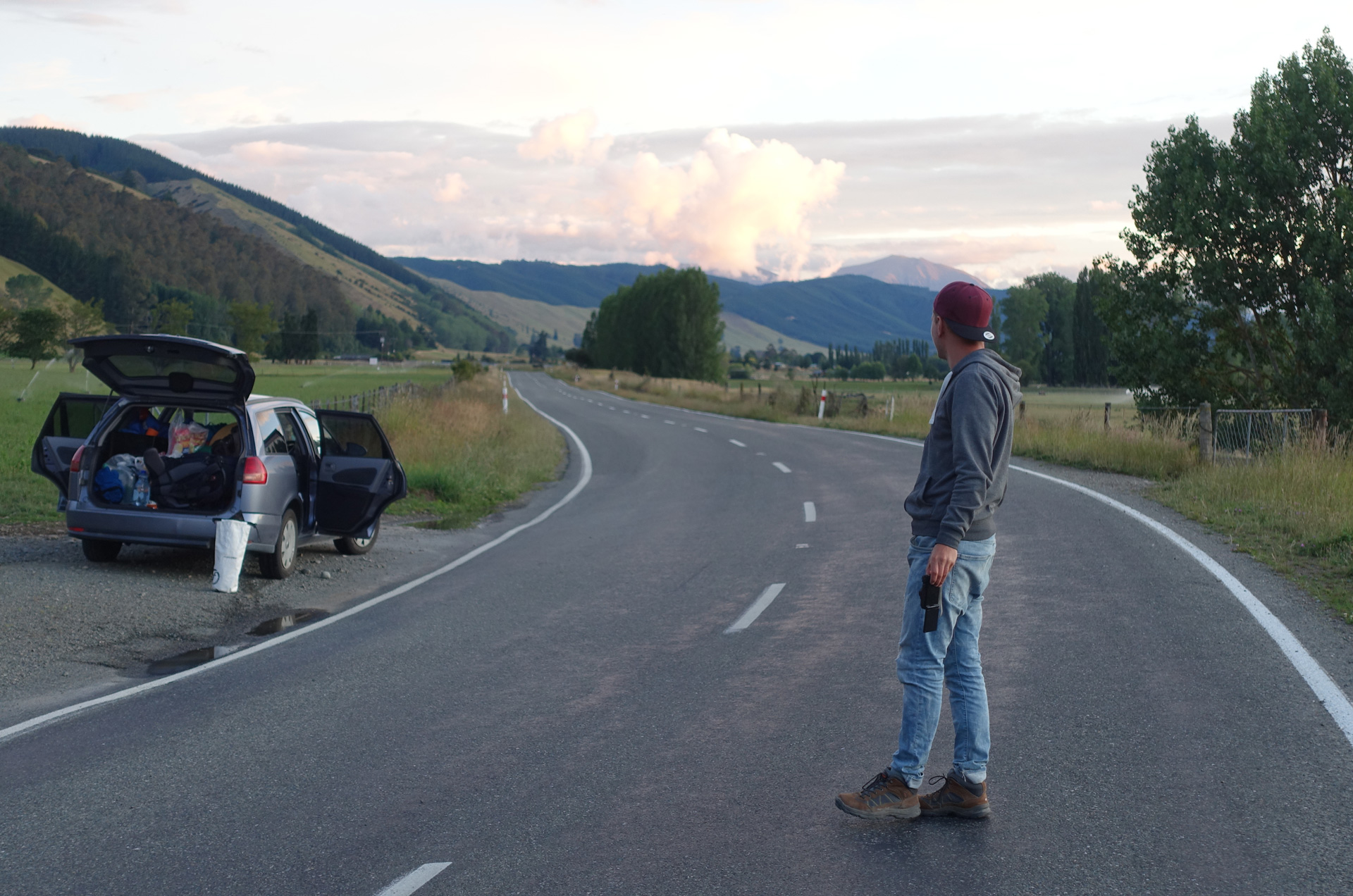
Stopping for a photo
Near Inangahua, New Zealand
Life on the road requires a certain frame of mind. How to spend the day and even what food to buy was often a collective decision. Inevitably, there were some activities I chose not to do and some meals that I will not be cooking again.
Because phone reception was almost always spotty, navigating and getting information online became a chore. We made time in towns and cities to find free internet at places like the library or McDonalds. By necessity, however, we focused on the few most important tasks that required a connection and moved on.
For me, even the most basic details of day to day life came into focus. Despite intentionally packing light, simply keeping track of all my belongings proved to be a challenge. Also, spending money with no steady income felt strange and uncomfortable. Both aspects of traveling I’m still trying to get used to.
All of it, of course, is part of the journey. We may focus on the epic experiences, but there are lessons and satisfaction in the tiny adjustments that make life on the road possible.
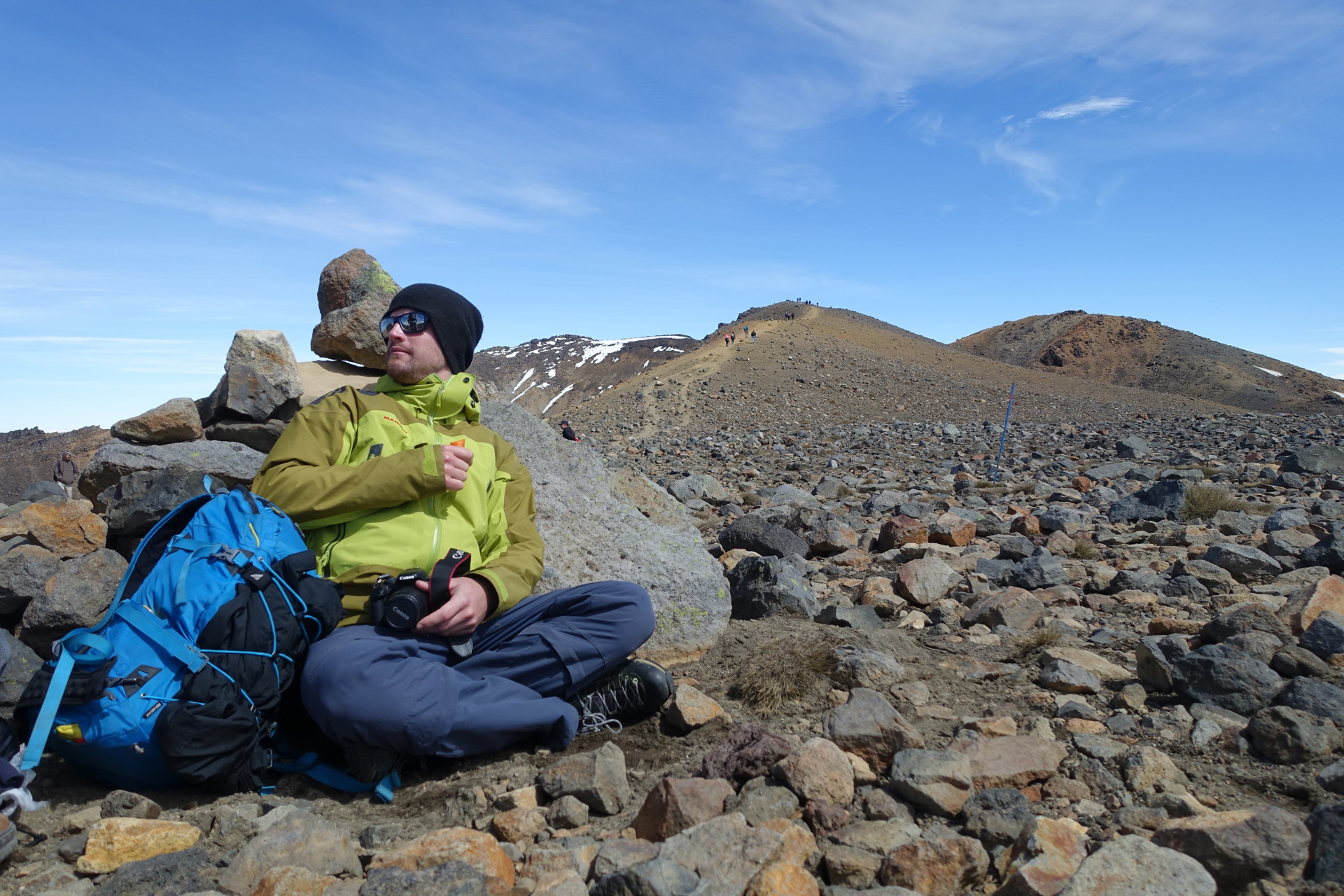
Chris finding shelter from the wind
Tongariro Crossing, New Zealand
Open to Travel
Traveling for a year requires a lot of preparation. Finding health insurance, organizing my finances, and deciding what to pack all took me a considerable amount of time and effort. Considering such decisions would impact the entirety of my travels, this research felt justified and comforting. Comparatively, when it came to figuring the specifics of my actual trip, I deliberately chose to plan less.
Sure, I had a general outline of countries and spots to hit throughout New Zealand, but they were just rough ideas. I wanted flexibility. I wanted to be open to my surroundings — to the people and places around me — and go where I felt was right. I loved the idea of happening upon situations I could not predict and being pressed by necessity to make my own opportunities. What this would mean in reality I didn’t really know.
I booked a one-way ticket to Auckland (with a flight to Sydney two months later per onward travel rules) and the first few nights in a hostel. At some point, I wanted to WWOOF in New Zealand so I considered doing that soon after I arrived. I also wanted to find a travel partner and I hoped maybe I’d meet someone in my hostel. But, these were just possibilities in my head. I was open to different plans, even if the uncertainty of it all was a bit uncomfortable.
As it happened, on my final connection from Fiji to Auckland, I was seated directly next to Garrit, a German who was also traveling alone and had about 6 weeks in New Zealand before heading to Beijing. We talked for most of the 3 hour flight, sharing our stories along with our ideas for seeing the country. We swapped phone numbers and agreed to meet up in the city soon.
By the time we parted ways, Garrit and I ended up spending just over a month together. We rented a Nissan Wingroad wagon, twice, added another German, Chris, and saw so much of New Zealand. When I started talking to Garrit on the plane that day, I didn’t know how everything was going to work out. But, I was open. I was open to a fleeting conversation, and I also was open to building a friendship and traveling together.
Essentially, I think this is what travel is all about. To get the most out of travel, we can’t rigorously plan every detail. Instead, we must be guided by a basic curiosity, an openness that allows us to react to our surroundings and follow our intuition.
The Edge of Life
George Santayana on travel.
We need sometimes to escape into open solitudes, into aimlessness, into the moral holiday of running some pure hazard in order to sharpen the edge of life, to taste hardship, and to be compelled to work desperately for a moment at no matter what.
Why I Decided to Travel for a Year
On November 23rd, 2015, I boarded a plane and embarked on a year of travel. I quit my job, ended my lease, and said goodbye to my family and friends. It was the most difficult decision I ever made and it took years to realize.
It also came with a lot of doubt and uncertainty. Why do this?
For me, travel represents the ultimate learning opportunity. A chance to broaden my understanding of the world and of myself; a density and diversity of life experience that is difficult to achieve otherwise.
By traveling slowly, cheaply, and independently, I hope to magnify my journey. I hope to discover what is essential and appreciate what I have by doing without. I hope to challenge myself and do the things that terrify me. I hope to see things and meet people that will change me forever.
Ultimately, we all craft a life story. I chose to travel for a year to ensure I’d have a story worth telling.